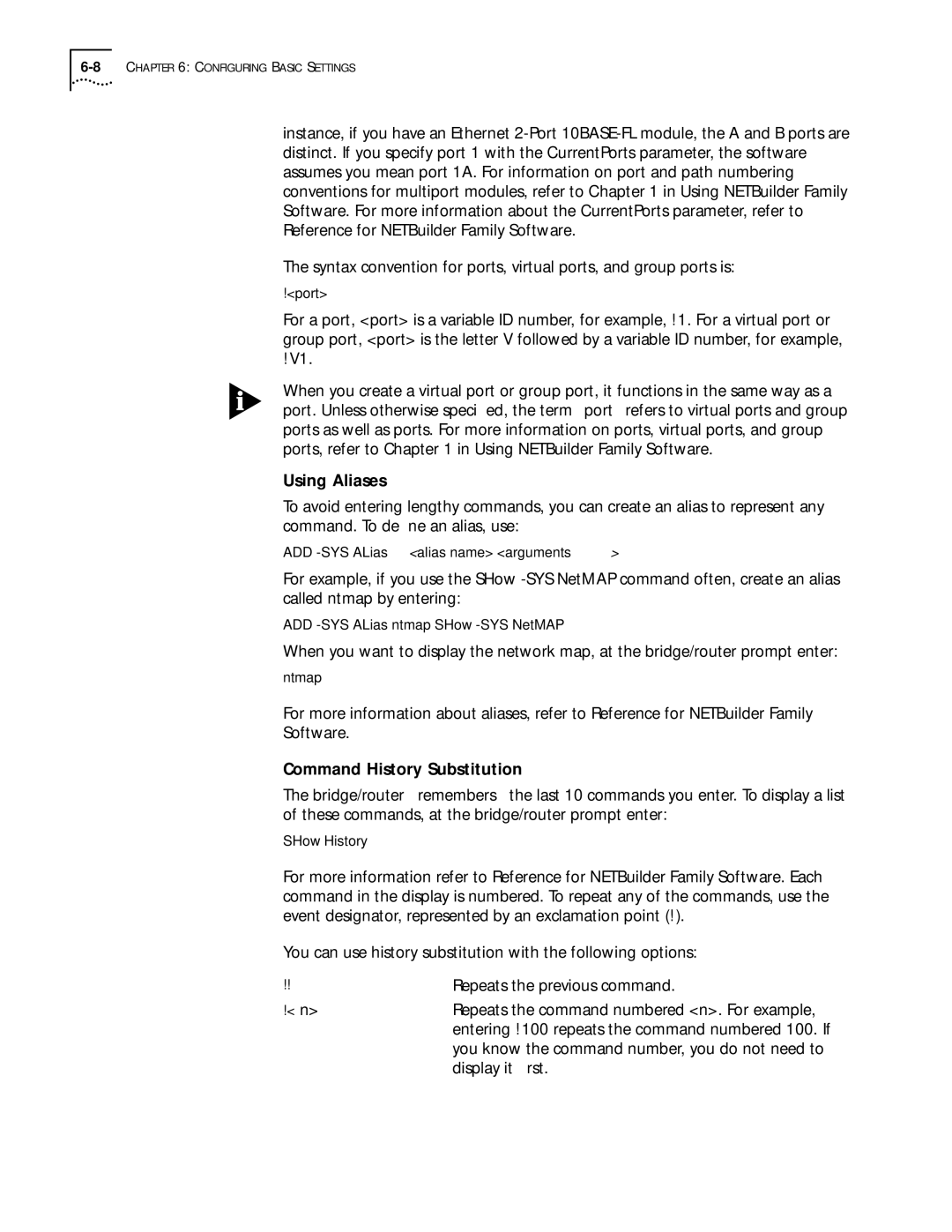
instance, if you have an Ethernet
The syntax convention for ports, virtual ports, and group ports is:
!<port>
For a port, <port> is a variable ID number, for example, !1. For a virtual port or group port, <port> is the letter V followed by a variable ID number, for example, !V1.
When you create a virtual port or group port, it functions in the same way as a port. Unless otherwise specified, the term “port” refers to virtual ports and group ports as well as ports. For more information on ports, virtual ports, and group ports, refer to Chapter 1 in Using NETBuilder Family Software.
Using Aliases
To avoid entering lengthy commands, you can create an alias to represent any command. To define an alias, use:
ADD
For example, if you use the SHow
ADD
When you want to display the network map, at the bridge/router prompt enter:
ntmap
For more information about aliases, refer to Reference for NETBuilder Family
Software.
Command History Substitution
The bridge/router “remembers” the last 10 commands you enter. To display a list of these commands, at the bridge/router prompt enter:
SHow History
For more information refer to Reference for NETBuilder Family Software. Each command in the display is numbered. To repeat any of the commands, use the event designator, represented by an exclamation point (!).
You can use history substitution with the following options:
!! | Repeats the previous command. |
!<n> | Repeats the command numbered <n>. For example, |
| entering !100 repeats the command numbered 100. If |
| you know the command number, you do not need to |
| display it first. |
